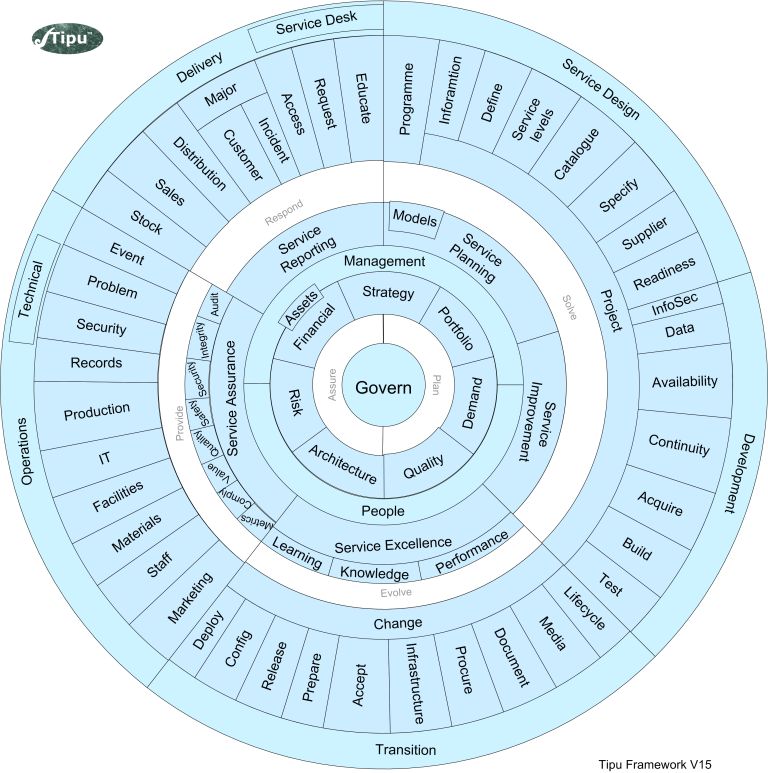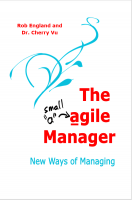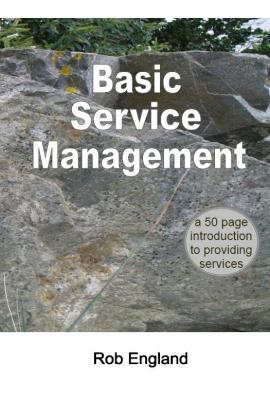The Tipu Framework
A framework is a structure to organise ourselves around. Tipu has its own Framework to allow us to organise our thinking and have something to compare other frameworks to (to identify the gaps – we like to think Tipu is pretty complete). One of the main purposes of the Tipu Framework is to show the complexity of service management. The Tipu Framework provides structure but it is not intended to provide a reference or advice.

Full explanation of the framework here
You may find this framework useful but we do not recommend that you adopt it as your organisation’s reference framework (though you may if you wish, it is in the public domain). Your industry possibly already has a best practice framework, and you may well have already adopted something. Go with whatever works for your organisation and/or has broad support in your industry.
The Tipu Framework represents just about all of the essential components (practices and functions) of service management best practice. None of these are optional. If any one of these is not being performed, or not to an adequate level of capability, then there is a risk to delivery of services.
The Tipu Framework is a synthesis of concepts from IT (COBIT, ITIL, CMMI, USMBOK) and other sources, along with a number of original concepts, to provide a broader framework that addresses the gaps of each of the sources.
The sources were IT-specific, but the framework is intended to be industry-agnostic – i.e. relevant to service management anywhere. This makes Tipu feel a little un-natural to an IT audience, but it is an excellent exercise for IT shops to think of themselves as a generic organisation and consider issues such as sales, distribution and marketing. Even now Tipu is simplistic in these areas and could be further expanded. E.g. see the author’s CoPr business model:

Tipu is a product of Two Hills Ltd, a New Zealand consulting company. Core components of Tipu such as this framework are available in the public domain.
This work by Two Hills Ltd is licensed under a Creative Commons Attribution-ShareAlike 3.0 Unported License. Content must be attributed to "Two Hills Ltd www.twohills.co.nz".
- Login to post comments




 Made in New Zealand
Made in New Zealand 